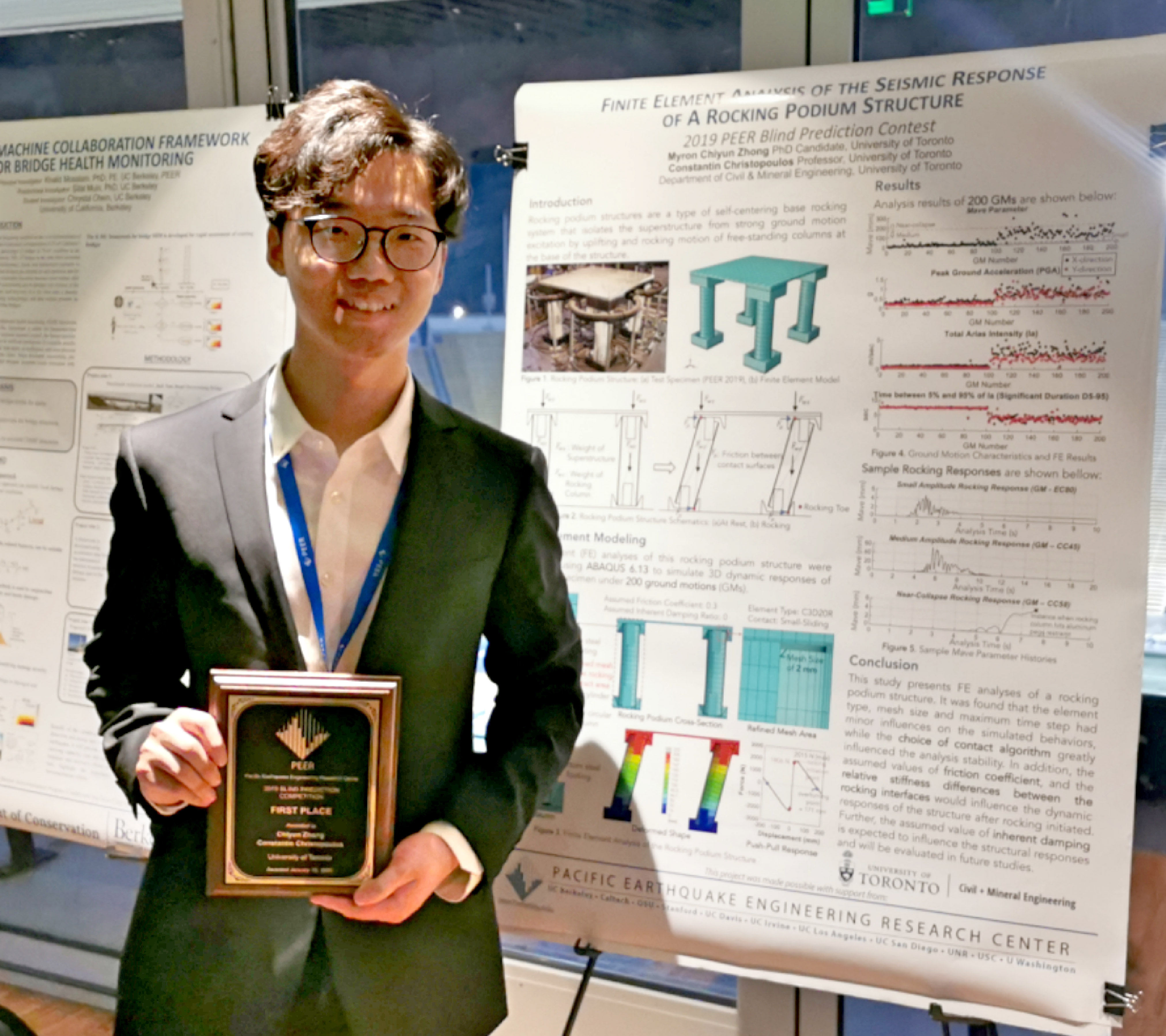
A University of Toronto PhD candidate in civil engineering has won an international competition for predicting the results of an earthquake. Myron Chiyun Zhong (CivE 1T7, PhD Candidate), along with supervisor Prof. Constantin Christopoulos, won first place in the Pacific Earthquake Engineering Research (PEER) Center’s Blind Prediction Contest at a ceremony held at the University of California, Berkeley the evening of Thursday, January 16 2020.
Zhong submitted the most accurate prediction for an earthquake model based on shake table results. The contest parameters are described as “a blind prediction contest to predict the maximum bi-directional seismic response of a four-column rocking podium structure excited by artificially generated ground motions applied by a shaking table.”
Some 13 teams, with contestants from 10 different countries, participated in the 2019 PEER Blind Prediction Competition. Testing was completed using a shake table at the University of Bristol in the U.K.
“This blind prediction contest is related to my PhD research here, so it was good to put it to this test,” remarked Zhong. “Working with Professor Christopoulos we’re trying to develop and validate a novel self-centering structural system that can be applied to high-rise structures, and potentially many other different types of structures, to protect from damage caused by severe wind or earthquake events.”
Prof. Khalid Mosalam, Director of PEER Center and a civil engineering professor at the University of California, Berkeley said, “Blind prediction competitions provide great opportunities to evaluate and improve the current analytical modelling and simulation capabilities of the structural engineering profession, including means for uncertainty quantification. This year’s competition was particularly challenging for the contestants in that they needed to predict the results of 200 shaking table tests, requiring a reasonable amount of simulation time. Despite this challenge, some of the teams had predictions quite close to the shaking table test results.”
Asked about the work being done at U of T, with respect to structural engineering and seismic resiliency, Zhong remarked, “We’re pretty impressive, I think!”
Phill Snel